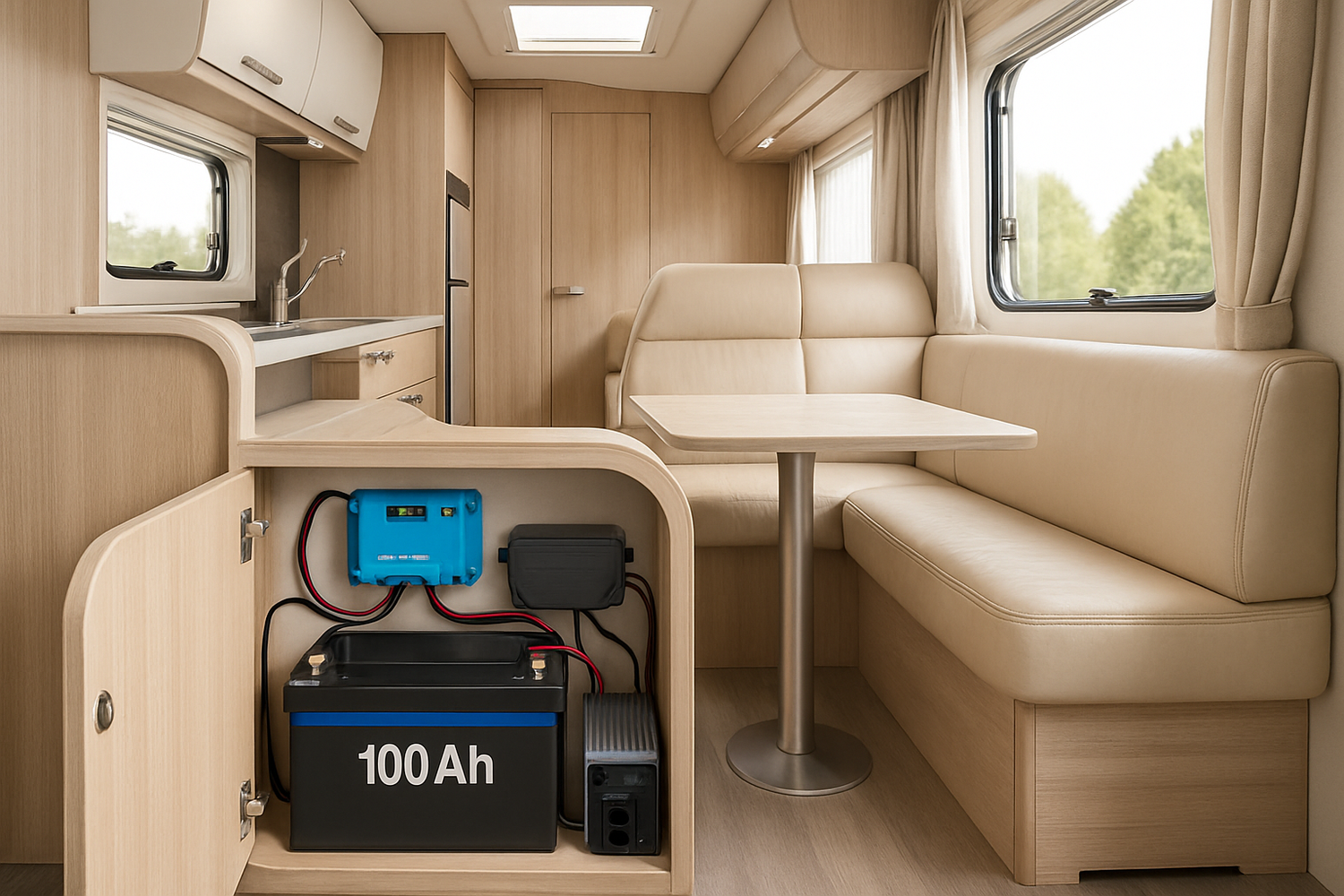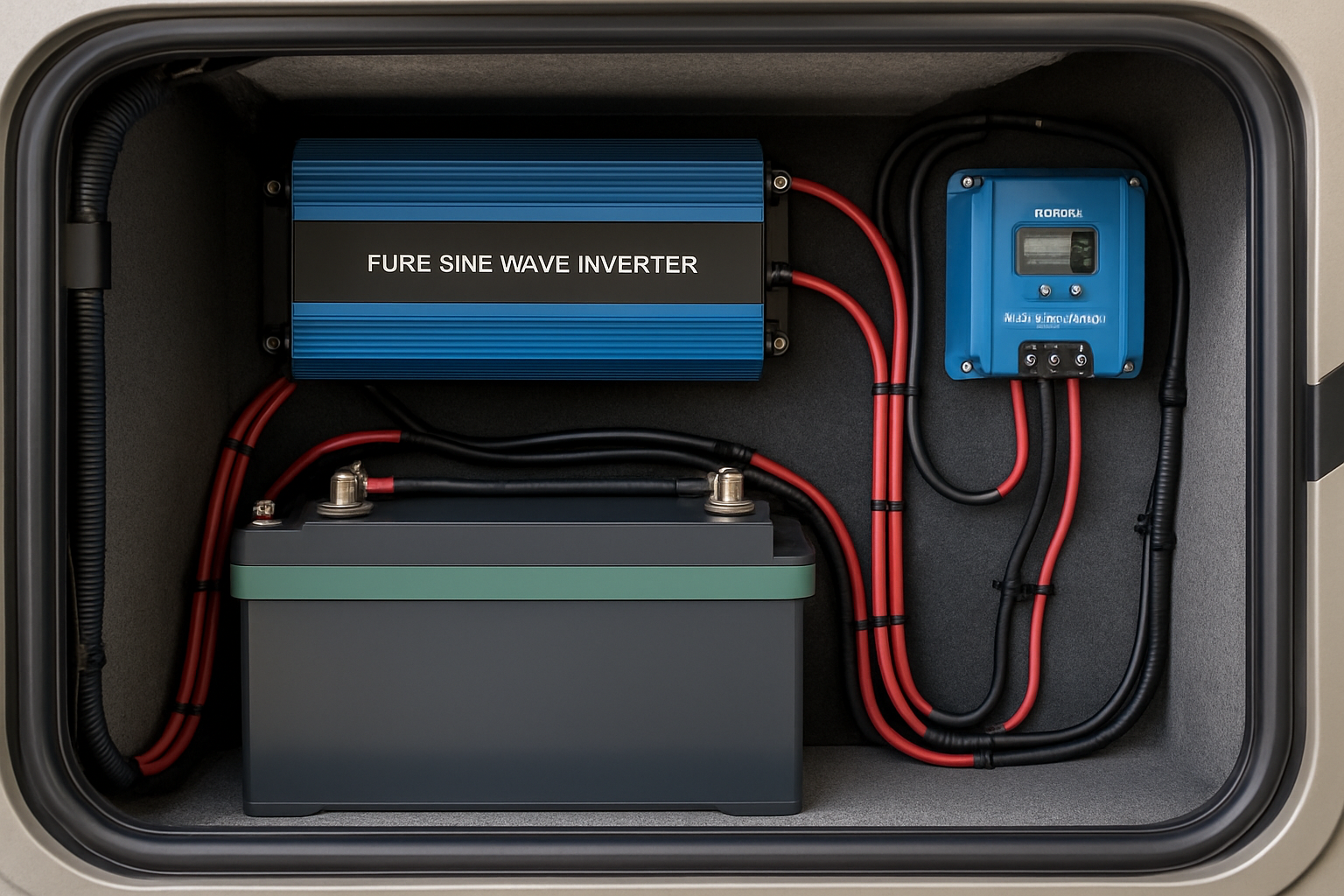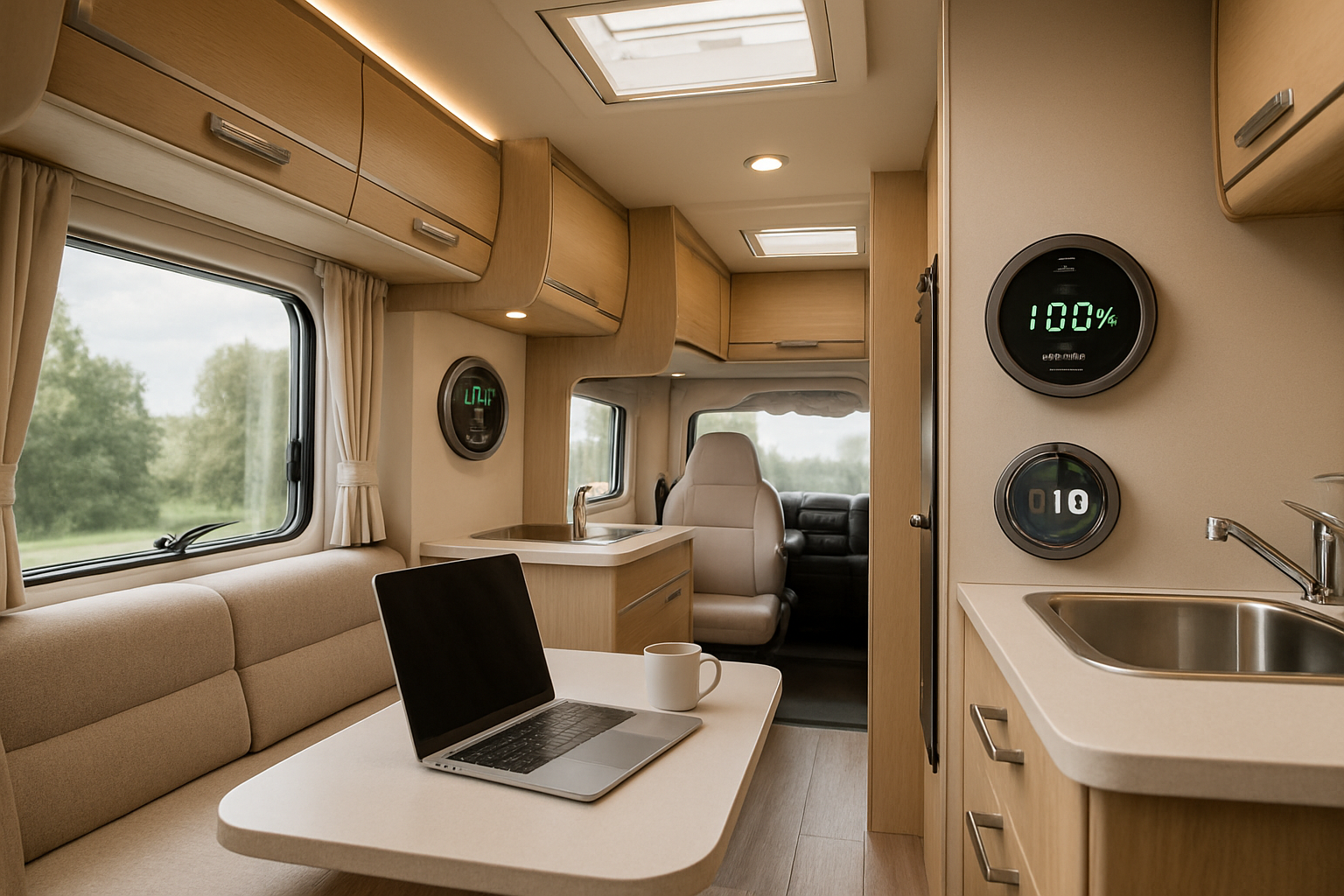Choosing the right battery is the foundation of a reliable RV power system. A correctly sized battery ensures you have consistent power for your appliances and devices, offering freedom and comfort on the road. This guide provides a clear process for determining if a 100ah lithium battery meets your specific needs, focusing on practical calculations and real-world usage.
Understanding Your RV's Power Consumption
Before selecting a battery, you must first understand your energy usage. An accurate assessment prevents you from investing in a system that is either too small to meet your demands or unnecessarily large and costly. A detailed energy audit is the most effective way to start.
Conducting a Thorough Energy Audit
An energy audit involves cataloging every electrical device in your RV and estimating its daily power consumption. List all appliances, from lights and water pumps to refrigerators and laptops. Note the power rating (in watts) for each device and estimate how many hours you use it per day. Multiply the watts by the hours to find the daily watt-hours (Wh) for each appliance. Sum these figures to determine your total daily energy requirement.
| Appliance | Power (Watts) | Daily Usage (Hours) | Daily Energy (Watt-hours) |
|---|---|---|---|
| LED Lights (4) | 20W | 4 | 80 Wh |
| Water Pump | 60W | 1 | 60 Wh |
| 12V Refrigerator | 50W | 8 (cycle time) | 400 Wh |
| Laptop Charging | 65W | 2 | 130 Wh |
| Phone Charging (2) | 10W | 2 | 20 Wh |
| Total Daily Need | 690 Wh |
Considering Your Travel and Usage Habits
Your power needs will change based on your travel style. Weekend trips may require less power than full-time living. Similarly, seasonal changes have a significant impact. You might use more power for heating systems in the winter or for fans and air conditioning in the summer. Adjust your energy audit to reflect your typical and peak usage scenarios to ensure your system is prepared for all conditions.
Why a 100ah Lithium Battery is a Popular Choice
Lithium batteries, specifically Lithium Iron Phosphate (LiFePO4), have become the standard for modern RV power systems. Their performance and longevity offer substantial advantages over older battery technologies. A 100ah lithium battery, in particular, hits a sweet spot for many users, providing a significant amount of usable energy in a compact form factor.
The Advantages of Lithium Iron Phosphate (LiFePO4)
LiFePO4 batteries provide several key benefits for RV applications. They can be discharged to a much greater depth, often 80-100%, without sustaining damage. In contrast, traditional lead-acid batteries should only be discharged to 50% to preserve their lifespan. This means a 100ah LiFePO4 battery provides nearly double the usable energy of a 100ah lead-acid battery. They also offer a much longer cycle life, often lasting for thousands of cycles, making them a durable long-term investment. Furthermore, they are significantly lighter and require no maintenance. The high depth of discharge tolerance is particularly valuable for supporting renewable energy integration, a point highlighted in research from IRENA on smart charging. According to the Innovation Outlook: Smart charging for electric vehicles, this characteristic is necessary for applications like system-wide balancing.
Calculating Usable Capacity
The concept of usable capacity is critical. A 100ah LiFePO4 battery provides approximately 1280 watt-hours of energy (12.8V x 100Ah). With a high depth of discharge, you can access nearly all of this energy. This efficiency is a primary reason why a 100ah lithium battery can power a wide range of RV setups, from simple weekend campers to moderately equipped motorhomes.
The Sizing Calculation: Matching Your Battery to Your Needs
With your energy audit complete, you can now perform a straightforward calculation to see if a 100ah battery is the right fit. This process ensures your power system is both reliable and efficient.
Step-by-Step Sizing Formula
First, convert your total daily watt-hour (Wh) consumption into amp-hours (Ah). The formula is simple: Daily Watt-hours / Voltage = Daily Amp-hours. For a typical 12V RV system and a daily usage of 690 Wh, the calculation would be: 690 Wh / 12.8V = 53.9 Ah. In this scenario, a 100ah lithium battery provides nearly two days of power without any recharging, offering a comfortable buffer.
Planning for Autonomy and System Inefficiencies
Consider how many days of autonomy you require—that is, how many days you want your system to last without any solar or generator input. You should also account for system inefficiencies. Inverters, wiring, and charge controllers all consume some power. A common practice is to add a 20% buffer to your total calculation to cover these losses and ensure reliability. For a deeper analysis of how different components affect overall efficiency, the ultimate reference on solar storage performance offers valuable metrics and comparisons that can help you optimize your setup.
The Role of Solar Charging in Your System
A 100ah lithium battery is one part of a complete RV solar charging system. The size of your solar panel array will determine how quickly you can replenish the energy you use. A well-balanced system, where the solar array can fully recharge the battery on a typical sunny day, is key to achieving energy independence. The International Energy Agency's Solar Energy Perspectives report notes that smart grids can help integrate variable renewable electricity, a principle that applies directly to mobile RV power systems where battery storage is essential.
Scaling Your System for Greater Needs
While a 100ah battery is sufficient for many, some RVers will require more capacity. Fortunately, lithium battery systems are easily scalable to meet growing energy demands.
When to Consider a Larger Battery Bank
If you plan to run high-demand appliances like a microwave, coffee maker, or air conditioner, or if you intend to spend extended periods off-grid, you will likely need more than 100ah of capacity. The global growth in battery deployment, as detailed in the IEA's report The Role of Critical Minerals in Clean Energy Transitions, reflects the increasing demand for robust energy storage in all sectors, including mobile applications.
Expanding Your System with Parallel Connections
To increase your total capacity, you can connect multiple 100ah lithium batteries in parallel. Connecting two 100ah batteries in parallel creates a 200ah battery bank, doubling your available energy. This modular approach allows you to expand your system as your needs change without replacing your initial investment. Always ensure your connecting cables and other system components are rated to handle the increased capacity.
Your Path to Reliable RV Power
Sizing your RV battery correctly is the most important step toward building a dependable off-grid power system. By starting with a detailed energy audit, understanding the superior performance of LiFePO4 technology, and applying a simple sizing formula, you can confidently determine if a 100ah lithium battery is right for you. This foundational component, when paired with an appropriate solar charging setup, empowers you to travel with the comfort and freedom of your own independent power source.
Frequently Asked Questions
Can a 100ah lithium battery run an RV air conditioner?
A single 100ah lithium battery can technically power a small, efficient RV air conditioner for a very short time, but it is not a practical solution for sustained use. Running an AC unit requires a large inverter and a much larger battery bank, typically 300ah or more, along with a substantial solar array to keep it charged.
How long will a 100ah lithium battery last in an RV?
The runtime depends entirely on the electrical load. If your daily power consumption is 50Ah, a fully charged 100ah lithium battery will last for approximately two days without any recharging. If your load is only 20Ah per day, it could last up to five days.
What is the difference between Amp-hours (Ah) and Watt-hours (Wh)?
Watt-hours (Wh) measure total energy, calculated as Volts x Amp-hours. It is the most accurate way to assess energy consumption because it accounts for voltage. Amp-hours (Ah) measure capacity relative to a specific voltage. Most RV battery sizing starts with Wh to get a precise picture of energy needs before converting to Ah for battery selection.
Is it safe to mix old and new lithium batteries in the same bank?
It is not recommended to mix old and new batteries, even if they are the same model. Over time, batteries degrade slightly. Mixing batteries of different ages or charge cycles can lead to an imbalance in the bank, where one battery works harder than the other. This can reduce the overall performance and lifespan of your system.





Leave a comment
All comments are moderated before being published.
This site is protected by hCaptcha and the hCaptcha Privacy Policy and Terms of Service apply.